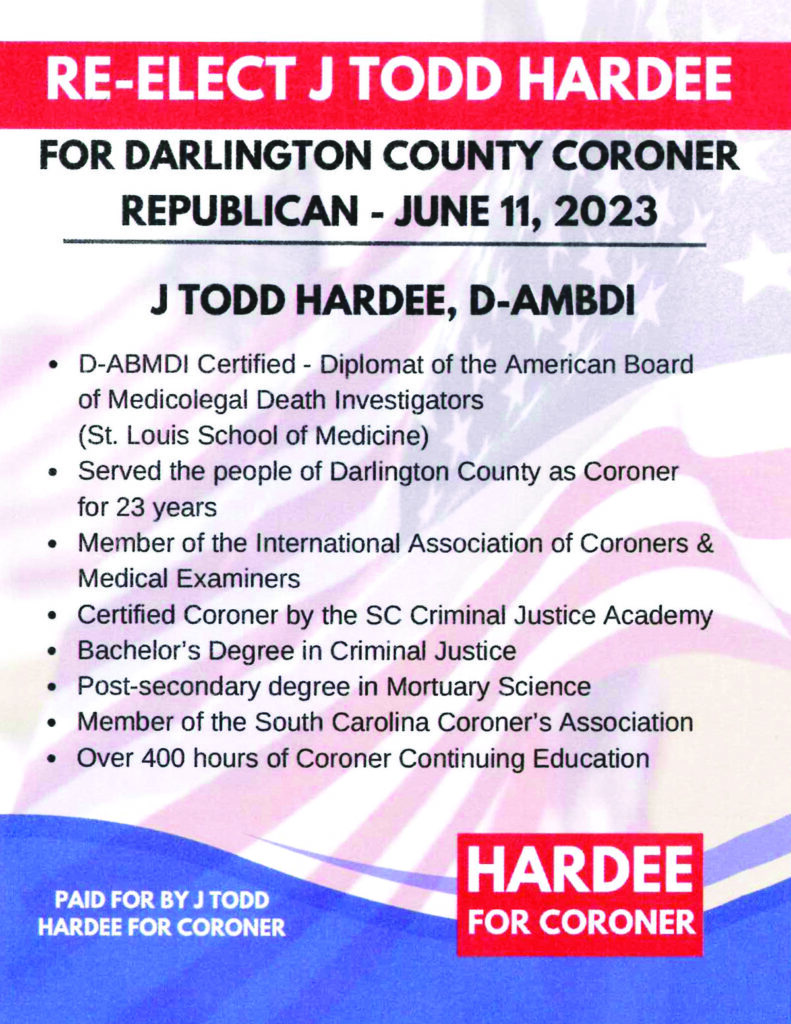NRC holds open house in Hartsville

By Samantha Lyles, Staff Writer, slyles@newsandpress.net
Representatives from the U.S. Nuclear Regulatory Commission held an annual open house event April 29 at the Hartsville Library, offering local citizens and reps from NRC and Duke Energy an opportunity to discuss issues of concern in a low-key, one-on-one fashion.
“We always look forward to talking with the community about how we’ve been performing over the past year,” said Charles Ellison, spokesperson for Duke’s H.B. Robinson Plant located just north of Hartsville. “NRC actually puts this event on about this time every year, and they present their information so that everyone’s fully aware of what all is going on at the plant.”
Light turnout for the one-hour meeting didn’t seem to surprise NRC officials in attendance.
“If there aren’t issues (at the plant), we don’t get a lot of people,” said Roger Hannah, senior public affairs officer for NRC’s Region II (Southeast). “Basically, if you want to come in for five minutes and ask what the NRC does, you can do that… We feel it’s important to make ourselves available to people in the community. They can get stuff off our website, but it’s not like meeting people in person.”
Locally, NRC has two on-site resident inspectors who regularly examine Robinson’s reactor safety, radiation safety, and plant security protocols to ensure adherence to regulations. Hannah says these inspectors rotate out to new facilities every few years to preserve objectivity.
Though NRC had no specific issues with the Robinson Plant to speak of on this night, Hannah did address the recently publicized disposal of low-level radioactive materials in Robinson’s ash basin. In July of 1980, former plant owner Carolina Power & Light transferred 3,000 cubic meters of slightly contaminated radioactive waste sediment into the ash pond without permission from SC DHEC or the Nuclear Regulatory Commission (NRC). The plant was cited for the violation.
On several other occasions, waste containing legally permissible levels of Cobalt-60was disposed of in the ash pond. CP&L (which later became Progress Energy) obtained license from NRC for these disposals, which took place between 1983 and 1998.“A lot of these instances predated me and a lot of other people at the NRC,” said Hannah. “My understanding is that the material (from the permitted disposals) was below the levels where it would have to be disposed of as radioactive waste, because there are residual amounts of radioactivity in a lot of different things.”
Duke reps have stated that well testing at the ash pond site reveals “non-detectable” levels of Cobalt-60. Hannah said that while the NRC inspectors do not assist plant employees with such testing, they do observe and vet the testing process.
“We basically inspect their program to make sure that they’re following all the right protocols, to make sure that what they’re reporting makes sense,” said Hannah.
To learn more about the U.S. Nuclear Regulatory Commission, visit their website at www.nrc.gov.



